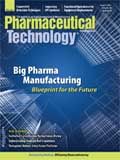Report from Asia
Contract manufacturing organizations throughout Asia are increasing their capabilities to meet market demand and attract foreign investment and partnerships.
Asia's biomanufacturing industry has a lot to live up to in the coming years. A Business Monitor International (BMI) report projects that Asia's share of global biopharmaceutical manufacturing facilities alone will double between 2009 and 2013, growing from 10% to 20% of global market share. Asian contract manufacturing organizations (CMOs) are most likely to benefit from the growth. Multinational companies are looking to outsource in order to combat escalating costs at home. To compete, Asian CMOs are making fast strides to comply with FDA and EMA standards and requirements.

PHOTO: JOHN FOXX / GETTY IMAGES
To date, India has the highest number of FDA-certified manufacturing facilities and more than four times the number of drug-manufacturing staff than does the United States (India has more than 12 times the number of manufacturing staff than the United Kingdom). Also, China is working hard to address its intellectual property (IP) rights issues. In 2007, the government issued 53 regulations related to drug-approval process improvement and shortened its timeframe for investigational new drugs by half.
Industry players have also expressed confidence in Asian developed countries such as South Korea and Singapore. These countries have well-established manufacturing environments and promising government initiatives. For example, Singapore's biomedical integrated strategy, launched in June 2000, has attracted big players, including Lonza and Novartis, to set up shop in its country. In June 2011, Lonza committed an additional $12.2 (CHF$10) million to further expand its Singapore plant in response to the country's positive economic growth and the government's continued support for the biopharmaceutical manufacturing sector.
To keep up with the ongoing and expected growth in biopharmaceutical manufacturing, domestic Asian CMOs are implementing a few changes to attract more global attention, including partnerships and investment.
Upgrading technology
In recent years, many pharmaceutical companies have shifted their focus from straight manufacturing to innovation, productivity, and quality control. Use of new technologies that are cost-effective and require minimal maintenance is growing more than ever before. Single-use technology, or disposables, in particular, is becoming more popular among CMOs based in Asia. The technology makes CMOs more attractive because it reduces production complexity and extends the range of services that can be offered to global customers.
Jay Chandran, associate research director of the healthcare division Asia Pacific for Frost & Sullivan, says, "[Single-use technology] will gain popularity in Asia in due course as it becomes a mandatory manufacturing capability to have if manufacturers want to remain competitive in the export markets of North America and Europe. Collaboration with large international players will further encourage the use of this technology in Asia."
In 2008, San Diego-based Pacific Biopharma Group and PacificGMP partnered to establish a single-use facility called China Quantitative Biomedicine in Taizhou, China. The facility will manufacture proteins for the US and European markets, and aims to meet the rising demands in Asia.
Unique partnerships
Four to five years ago, the way to gain access to biomanufacturing was by outsourcing to CMOs through traditional procurement processes, or by building or acquiring facilities to assert control in supply. In recent years, there has been a paradigm shift toward merger-and-acquisition (M&A) strategies.
Michael Banks, head of sales and business development for biological manufacturing at Lonza, says, "The strategies are diverse, including local or CMO–border partnerships, outsourcing strategy, and manufacturing optimization. As it has a lot to do with increased cost pressure, the shift is a result of accumulative technical experience and maturing of technologies."
Interestingly, many companies outside the pharmaceutical business are taking a plunge into the biomanufacturing market as well. In February 2011, Japan's Fujifilm announced that it will acquire Merck's Biomanufacturing Network for $490 million. South Korea's Samsung established a joint venture with Quintiles (Durham, North Carolina), whereby the latter will commit $30 million to support Samsung's entry into the biopharmaceutical market.
The move by these high-tech companies bears significance for the industry. "These are positive CMO–industrial moves for the biologics market," says Banks. "In the long run, it will strengthen the biomanufacturing value chain and fuel a full-fledged regional supply chain involving raw materials, talent, and various adjacent CMO establishments. These ancillary factors will further encourage the growth of the Asian innovator's pipeline and contribute significantly to the health of the global biopharma market in the near future."
Training and education
A key challenge facing the biomanufacturing business in Asia is gaining access to an experienced workforce. According to Banks, "Biomanufacturing is a young sector and a people business. It is therefore important to develop, troubleshoot, and optimize the processes, and ensure know-how and expertise to achieve timely delivery and cost effectiveness."
To get ahead in this area, Lonza, for instance, has trained the majority of its workforce under the Strategic Attachment and Training program with the Singapore Economic Development Board in Singapore.
Conclusion
Overall, the biologics market is predicted to be next area of growth in Asia and globally as companies aim to compensate for their potential loss of revenues from current small-molecule blockbusters. Many companies have already embarked on biologics programs, facility establishments, and related partnerships and acquisitions. Flexibility will be crucial, says Banks. "It is important to address to both market and technological demands. As a biomanufacturer, it is imperative to consider market segments and production demand instead of focusing only on blockbuster drug development and orphan drugs," he says.
Jane Wan is a freelance writer based in Singapore

Pharmaceutical Tariffs Are Imminent: How Industry is Bracing for Impact
April 16th 2025On April 14, 2025, the Trump Administration launched a national security-driven investigation into pharmaceuticals, a move that will likely result in tariffs being placed on pharmaceutical drugs, ingredients, and other components that are imported from outside of the United States.